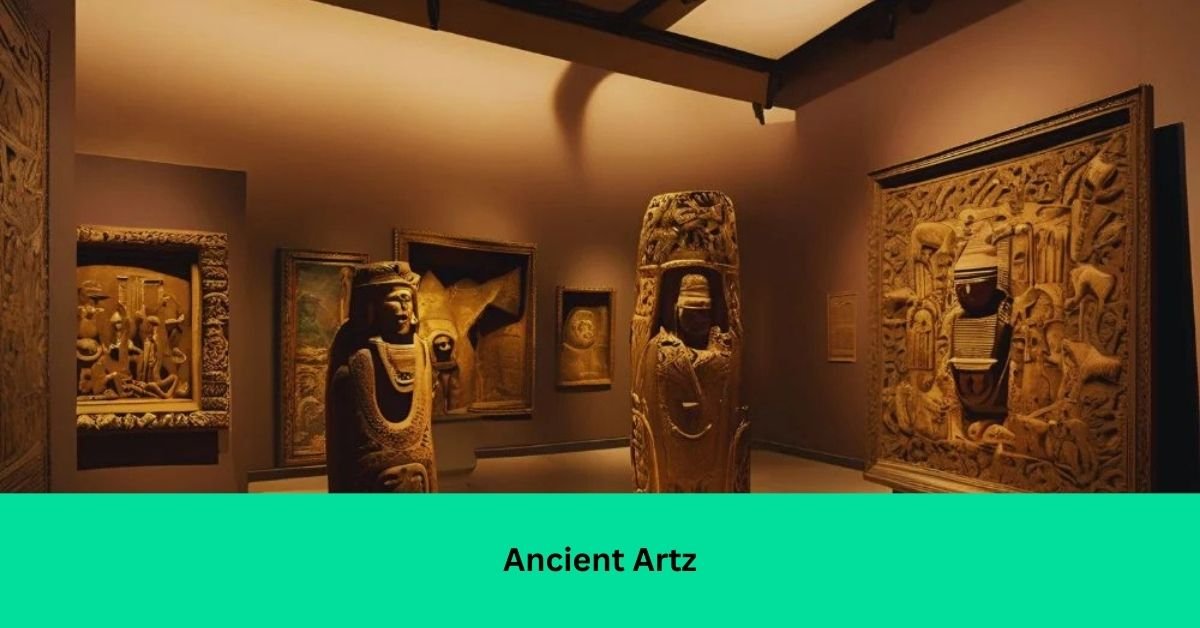Throughout human history, ancient artz has served as a profound means of expression, encapsulating the cultural values, religious beliefs, and daily experiences of various civilizations.
From the intricate cave paintings of prehistory to the majestic sculptures of ancient Greece, each artistic creation reveals insights into the identity and worldview of its creators.
This exploration delves into the fascinating elements of ancient artz, examining the techniques, materials, and purposes that shaped early human creativity.
The Essence of Ancient Artz
Ancient artz encompasses a broad spectrum of artistic expressions, including painting, sculpture, architecture, and pottery.
Created by civilizations from the prehistoric era to the early medieval period, this art not only adorned spaces but also fulfilled spiritual, ceremonial, and educational roles.
Each culture’s art reflects unique perspectives on existence, the afterlife, nature, and the divine, providing us with a deeper understanding of their beliefs and societal structures.
The Origins and Evolution of Ancient Artz
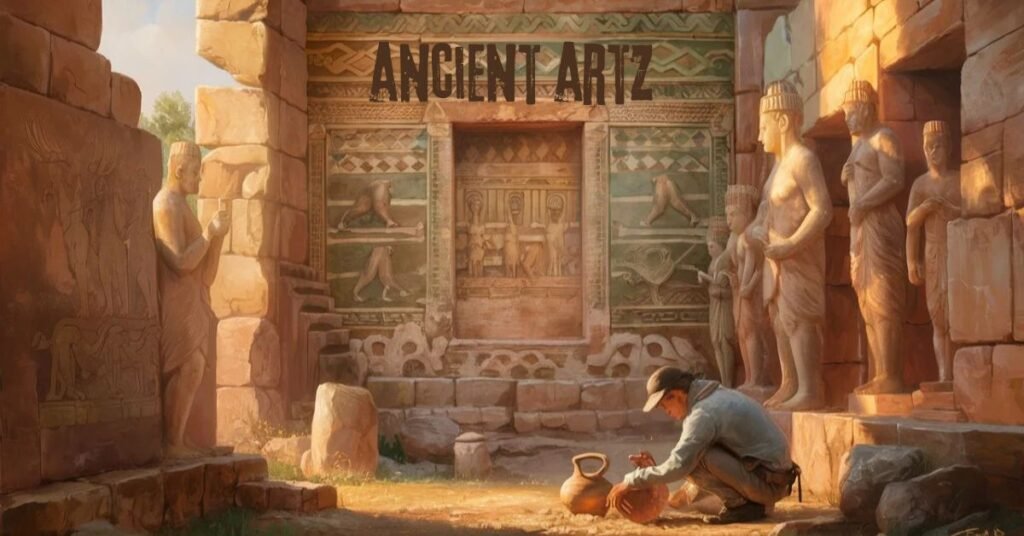
The history of ancient artz dates back tens of thousands of years, beginning with the earliest known cave paintings around 40,000 BCE.
Found in caves across Europe and Asia, these primitive artworks primarily depict animals and geometric shapes, suggesting early humans’ reverence for nature and the unknown.
As societies evolved, so did their art forms.
By the Bronze and Iron Ages, advancements in tools and techniques allowed for the creation of more detailed artworks, such as pottery and intricate carvings.
This evolution mirrors humanity’s progress in technology, belief systems, and social structures.
As empires rose and cultures interacted, art styles began to merge, leading to the development of iconic styles like Greco-Roman art, characterized by realism and idealized beauty.
Key Materials and Techniques in Ancient Artz
Ancient artists displayed remarkable ingenuity in utilizing available materials to create enduring works.
Some of the most common materials and techniques included:
Stone:
Essential for carvings and monumental structures, stone was a crucial element in Egyptian and Mesopotamian art.
The Great Pyramid of Giza and the ziggurats of Babylon showcase the monumental scale of these civilizations.
Metal:
Bronze and gold adorned sculptures and artifacts, symbolizing wealth and power.
Notable examples include the bronze statues of ancient Greece, which celebrated the human form and athletic prowess.
Pigments:
Ancient painters derived pigments from natural resources like plants and minerals, allowing for a limited yet effective color palette.
The vibrant hues found in Egyptian tomb paintings exemplify this resourcefulness.
Clay:
Clay was vital for pottery, enabling civilizations such as the Greeks and Chinese to produce functional and decorative items.
The terracotta warriors of Xi’an serve as a testament to the artistic capabilities of ancient China.
These materials and techniques reflect the resourcefulness of early artists, laying the groundwork for the development of modern art.
Symbolism in Ancient Artz
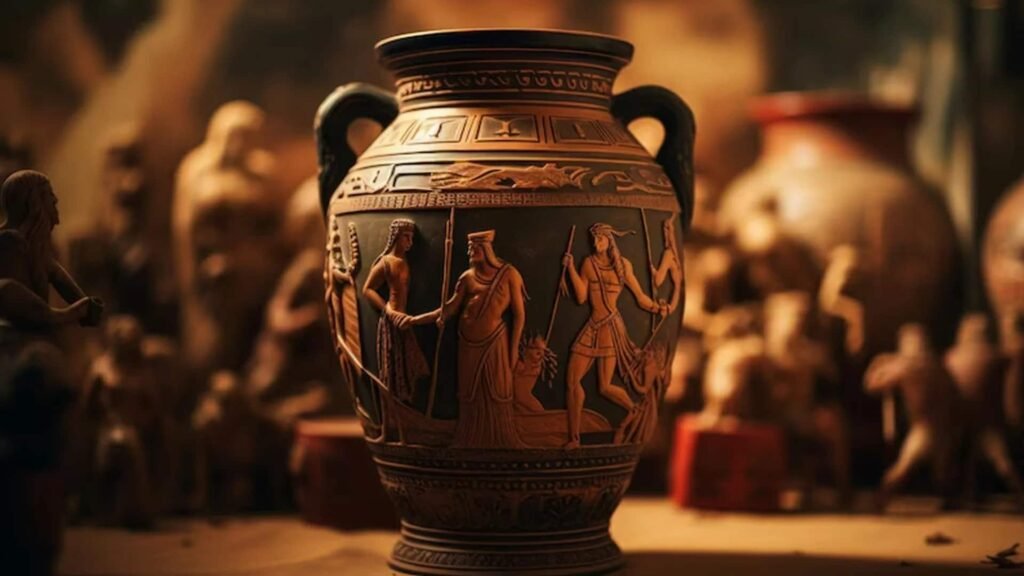
The symbolism embedded in ancient artz is rich and multifaceted, with every design element often carrying deeper meanings.
For instance, ancient Egyptians filled their artwork with symbols representing gods, nature, and the afterlife.
The ankh, a symbol of life, and the scarab beetle, representing rebirth, were prevalent motifs.
Greek art often depicted deities, heroes, and mythological narratives, embodying values such as bravery, wisdom, and honor. In contrast, ancient Chinese art utilized dragons as symbols of power and prosperity, demonstrating how cultural symbols conveyed universal values and beliefs.
Read: What Has Kiolopobgofit in it: Heart Health And More!
Ancient Artz as a Medium for Religious Expression
Many ancient civilizations used art as a significant medium for religious expression.
Temples, sculptures, and paintings frequently depicted deities and mythological stories, reinforcing religious teachings.
The grand temples of ancient Egypt and Greece exemplify how ancient artz was intertwined with spiritual beliefs.
Each statue, pillar, and mural within these sacred spaces represented aspects of the divine, creating an atmosphere that communicated the sacred to worshippers.
In ancient India, art played a similar role within Hindu and Buddhist traditions.
Elaborate temple carvings narrate stories from sacred texts, offering worshippers a visual connection to their beliefs and deepening their spiritual experiences.
Ancient Artz as a Reflection of Daily Life
While many ancient artworks are renowned for their grandeur, numerous artifacts provide insights into the daily lives of ancient peoples.
Pottery and wall paintings from ancient Greece depict various activities, from athletic competitions to domestic chores.
These artworks grant historians valuable glimpses into social structures, traditions, and economic practices.
Similarly, in ancient Egypt, tomb paintings vividly illustrate scenes of farming, fishing, and feasting, reflecting the cyclical nature of life and the values placed on community and sustenance.
Each ancient civilization has left an indelible mark on art history, contributing unique styles, motifs, and techniques:
Notable Civilizations and Their Contributions to Ancient Artz
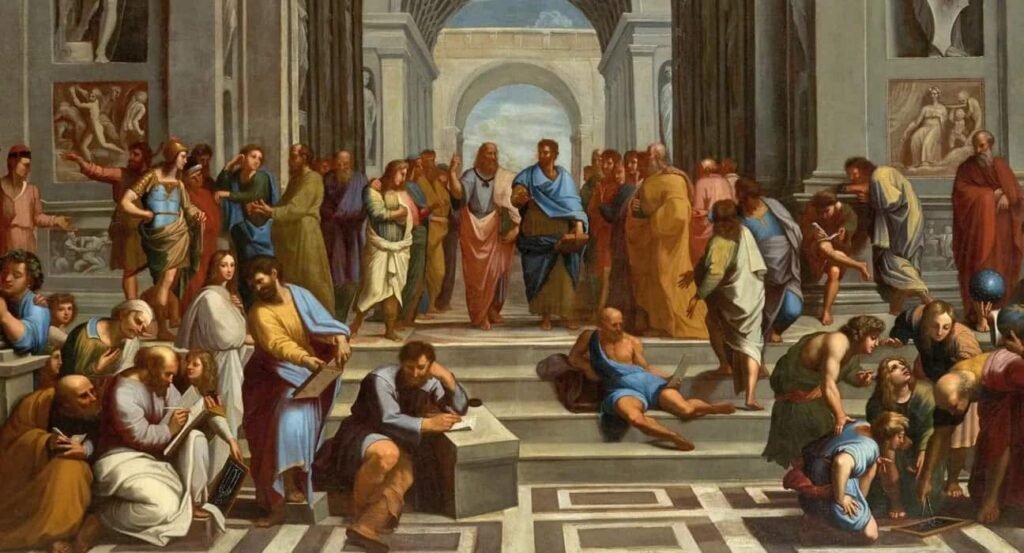
Each ancient civilization has left an indelible mark on art history, contributing unique styles, motifs, and techniques:
Egyptian Artz
Ancient Egypt stands as one of the most influential civilizations in the history of ancient artz.
The art produced in this region is characterized by its symbolic nature, monumental scale, and highly stylized forms.
Monumental Architecture:
- The Pyramids of Giza are perhaps the most iconic symbols of ancient Egyptian art.
- These colossal structures, built as tombs for pharaohs, are not only architectural feats but also serve as expressions of religious beliefs regarding the afterlife.
- The layout and orientation of the pyramids reflect astronomical alignments, highlighting the Egyptians’ advanced understanding of engineering and their reverence for the cosmos.
Sculpture and Reliefs:
- Egyptian sculpture is renowned for its adherence to strict conventions.
- Statues of pharaohs, such as those of Ramses II, exhibit idealized features that convey authority and divinity.
- Wall reliefs found in tombs, such as those in the Valley of the Kings, depict scenes of daily life, religious rituals, and the afterlife.
- These artworks were intended to provide for the deceased in the next world, illustrating the Egyptians’ belief in immortality.
Symbolism and Iconography:
- Egyptian art is rich in symbolism. Common motifs include the ankh (symbol of life), the scarab (symbol of rebirth), and the Eye of Horus (symbol of protection).
- Each element in Egyptian art is meticulously chosen to convey specific meanings, reflecting the civilization’s complex spiritual beliefs and social hierarchy.
Mesopotamian Artz
Mesopotamia, often referred to as the “cradle of civilization,” encompasses the cultures of ancient Sumer, Akkad, Babylon, and Assyria, each contributing uniquely to the artistic landscape.
Ziggurats and Temples:
- Mesopotamian architecture is exemplified by ziggurats, massive terraced structures that served as temples to the gods.
- The Ziggurat of Ur, dedicated to the moon god Nanna, demonstrates the impressive engineering capabilities of the Sumerians.
- These structures were not only religious centers but also symbols of political power.
Relief Sculptures and Stelae:
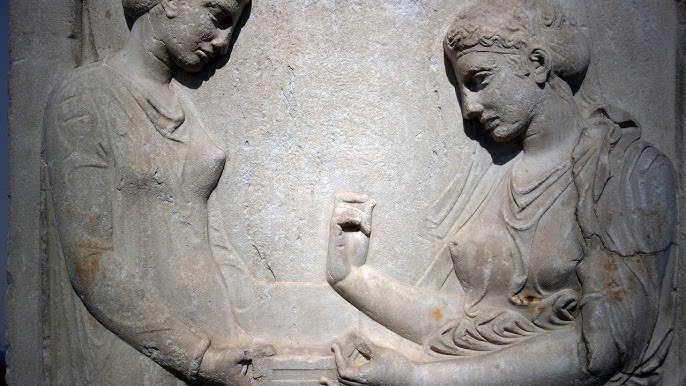
- Relief sculptures adorned the walls of temples and palaces, depicting scenes of warfare, hunting, and religious ceremonies.
- The Assyrian bas-reliefs, like those found in the palace of Ashurbanipal, are particularly noted for their dynamic representations of lion hunts and military victories, showcasing the might of the Assyrian empire.
Cylinder Seals:
- Another significant contribution from Mesopotamia is the invention of cylinder seals small, carved stone cylinders that were rolled onto clay to create intricate designs.
- These seals served as a form of signature and were used for administrative purposes, making them critical for understanding the economic and social structures of ancient Mesopotamia.
Greek Artz
Ancient Greece is celebrated for its profound impact on Western art and culture, particularly during the Classical period when artistic expression reached its zenith.
Sculpture:
- Greek sculpture is renowned for its pursuit of ideal beauty and realism.
- Artists like Phidias and Praxiteles created lifelike statues of gods and athletes, such as the famous statue of Zeus at Olympia and the Discobolus (Discus Thrower).
- The use of contrapposto a technique that depicts a relaxed stance brought a sense of movement and life to sculptures, setting a standard for future generations.
Architecture:
- Greek architecture, particularly temple construction, emphasizes harmony and proportion.
- The Parthenon, dedicated to the goddess Athena, exemplifies the use of the Doric order and features intricate sculptures, including the Elgin Marbles, which depict mythological battles and scenes of divine interaction.
Pottery:
- Greek pottery is equally significant, with painted vases illustrating myths, daily life, and athletic competitions.
- The black-figure and red-figure techniques allowed artists to create intricate designs, and the vases served both functional and decorative purposes, often used in ceremonies and as grave goods.
Chinese Artz
Ancient China boasts a rich artistic heritage characterized by its philosophical underpinnings and connection to nature.
Bronze Casting:
- The Shang and Zhou dynasties are notable for their advanced bronze casting techniques, producing ritual vessels and weapons.
- These bronzes often featured intricate designs and inscriptions, reflecting social hierarchy and ancestral worship.
- The use of bronze in ceremonial contexts emphasizes the connection between art and religion in ancient China.
Calligraphy and Painting:
- Chinese calligraphy is regarded as a high art form, emphasizing the beauty of characters and the fluidity of brushwork.
- Ancient Chinese painting, especially landscape painting, reflects the Daoist appreciation for nature and the cosmos.
- Artists like Gu Kaizhi created works that combined poetry and painting, conveying philosophical ideas through visual art.
Sculpture and Terracotta:
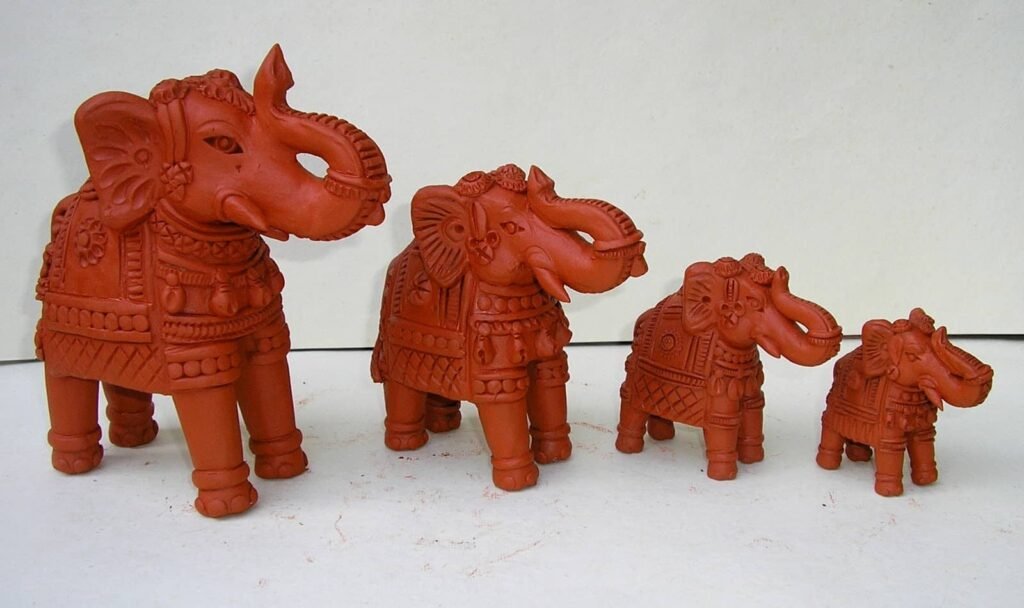
- The terracotta army of Emperor Qin Shi Huang is one of the most remarkable examples of ancient Chinese sculpture.
- Each soldier is uniquely crafted, symbolizing the emperor’s desire for protection in the afterlife.
- This monumental undertaking showcases the artistry and labor involved in ancient Chinese craftsmanship.
Mayan Artz
The Maya civilization is renowned for its sophisticated art, architecture, and culture, flourishing in Mesoamerica.
Stelae and Altars:
- The Maya carved stelae tall stone monuments that commemorate rulers and events.
- These inscriptions often feature hieroglyphics detailing the ruler’s lineage, achievements, and divine connections.
- Altars served as ceremonial spaces, emphasizing the relationship between the rulers and the gods.
Murals:
- Mayan murals, often found in temples and palaces, depict vivid scenes of mythology, daily life, and rituals.
- The murals in the Bonampak site provide insights into Mayan society, illustrating ceremonial events with vibrant colors and dynamic compositions.
Pottery:
- The Maya were skilled potters, producing elaborate vessels adorned with intricate designs and paintings.
- These pieces often served ceremonial purposes and provided a glimpse into the rituals and beliefs of the Maya.
The Enduring Influence of Ancient Artz on Modern Art
The principles and techniques of ancient artz have significantly influenced modern art and design.
During the Renaissance, artists drew heavily from Greek and Roman traditions, reviving ideals of beauty and realism.
Egyptian and Mesopotamian motifs continue to appear in contemporary jewelry, architecture, and fashion, symbolizing power and mystery.
Today’s artists still find inspiration in ancient works, demonstrating that the artistic achievements of these early cultures remain relevant and impactful.
The Role of Archaeology in Preserving Ancient Artz
Archaeology is vital for uncovering and preserving ancient artz.
Through careful excavation, researchers uncover artifacts that provide insights into the lifestyles, technologies, and beliefs of ancient cultures.
Conservation efforts ensure these invaluable works endure for future generations, while museums serve as spaces to showcase these treasures, keeping the legacy of ancient artz alive.
Technology and the Future of Ancient Artz Preservation
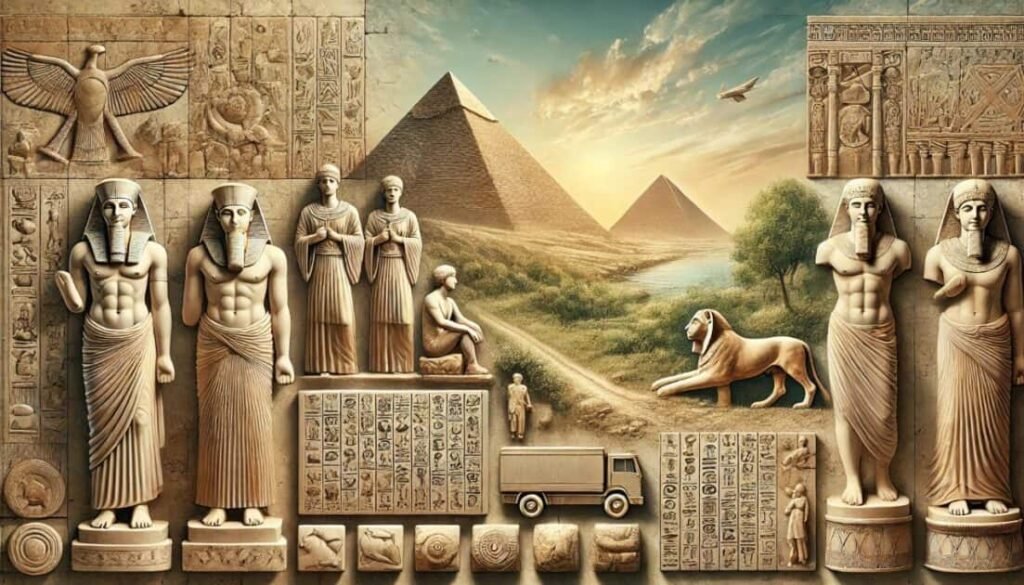
Advancements in technology have made it easier to preserve and study ancient artz.
Digital scans and 3D modeling allow researchers to recreate artifacts, enabling virtual exhibits that are accessible worldwide.
This technology not only preserves ancient art but also offers people the opportunity to experience it remotely, bridging cultural and geographical divides.
Read: Bosch 0332014150 12v 30a: What Can Be Used Instead!
Conclusion:
The art of ancient civilizations offers a window into the past, revealing the values, beliefs, and daily lives of diverse cultures. From the symbolic and monumental works of Egypt and Mesopotamia to the idealized forms of Greece, the philosophical depth of China, and the vibrant expressions of the Maya, each civilization has left a unique legacy.
Their contributions to ancient artz have profoundly shaped human history and continue to inspire modern art and culture.
By studying these remarkable artworks, we not only preserve their heritage but also deepen our understanding of human creativity and the shared desire to communicate through art across time.
FAQs:
What is meant by “ancient artz”?
“Ancient artz” refers to the diverse range of artworks, including paintings, sculptures, pottery, and architecture, created by early human civilizations. These artworks often reflected religious beliefs, cultural values, and daily life.
Why is studying ancient artz important?
Studying ancient artz helps us understand the cultural, religious, and social aspects of ancient civilizations. It provides insights into how early societies viewed the world and expressed their identity and values.
What materials were commonly used in ancient artz?
Common materials included stone, metal (like bronze and gold), clay, and natural pigments. These materials were crafted into sculptures, pottery, architectural features, and paintings.
How did ancient Egyptian artz influence other cultures?
Ancient Egyptian artz, known for its symbolism and grandeur, influenced neighboring cultures through its religious iconography, monumental architecture, and use of vibrant colors. It also inspired later art movements in history.
What role did ancient Greek artz play in society?
Greek art focused on beauty, realism, and proportion, and often depicted gods, heroes, and mythological scenes. It also introduced ideals of democracy and civic pride, profoundly impacting Western art and philosophy.
How did Chinese ancient artz reflect harmony with nature?
Ancient Chinese artz emphasized balance and simplicity, often portraying humans as part of the natural world. Jade carvings, pottery, and calligraphy were crafted with an appreciation for nature’s beauty and harmony.
What are the most famous examples of ancient artz?
Famous examples include the Egyptian Pyramids, Greek sculptures like the Venus de Milo, Mesopotamian ziggurats, Chinese jade carvings, and Mayan murals. Each reflects the unique artistic style of its civilization.
How has ancient artz influenced modern art?
Ancient artz has inspired numerous art movements, especially during the Renaissance when Greek and Roman ideals were revived. Today, elements of ancient artz appear in architecture, fashion, jewelry, and digital design.
What was the significance of symbolism in ancient artz?
Symbolism was essential in ancient artz, with icons like the Egyptian ankh and Greek myths conveying deeper meanings. Symbols represented gods, virtues, or natural forces, helping communicate cultural beliefs.
How is technology helping to preserve ancient artz?
Modern technology, including digital scans and 3D modeling, helps preserve ancient artworks by creating digital replicas. This allows for safer storage, restoration efforts, and virtual exhibitions accessible worldwide.
Read: Alight Motion Mod apk: Features, Risks, and Alternatives!

